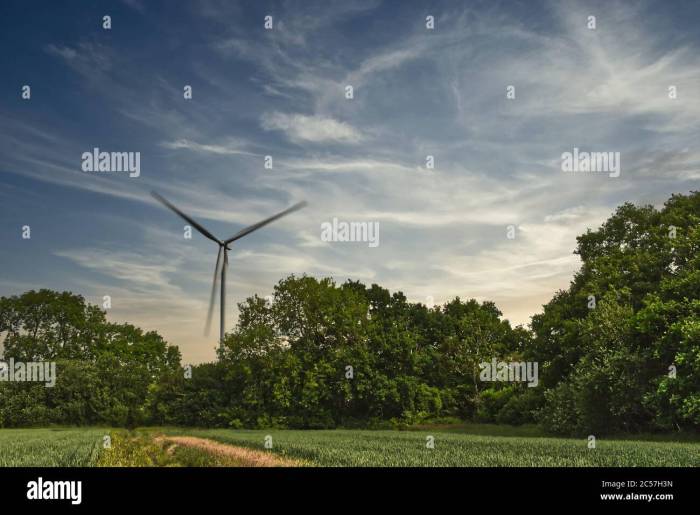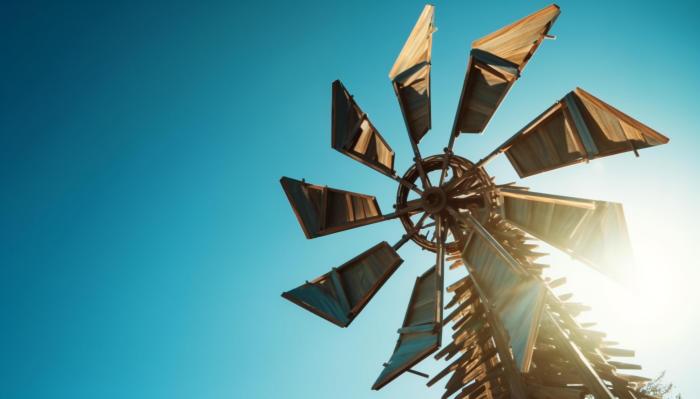A rotating turbine generates electricity to power a blow-dryer, a remarkable feat of engineering that harnesses mechanical energy to produce electrical energy. This innovative technology lies at the heart of countless applications, from powering homes to propelling vehicles, and its implications for sustainable energy production are profound.
The journey of electricity generation begins with the turbine, a marvel of precision engineering. As the turbine rotates, its blades capture the kinetic energy of a moving fluid, whether it be wind or water. This rotational motion is then converted into electrical energy through the principles of electromagnetic induction.
The generator, a crucial component of the system, plays a pivotal role in this conversion process.
Turbine Mechanics
A rotating turbine consists of a series of blades attached to a central hub. As the turbine spins, the blades interact with a moving fluid, such as air or water, causing the blades to rotate. This rotational motion is converted into electrical energy through a process known as electromagnetic induction.
The efficiency of a turbine is determined by its design and the properties of the fluid it operates in. Factors such as blade shape, pitch, and rotational speed all influence the turbine’s ability to convert mechanical energy into electrical energy.
Energy Conversion Process
The energy conversion process in a turbine involves the interaction between the moving blades and the fluid. As the blades rotate, they create a pressure difference between the two sides of the blade. This pressure difference generates a force on the blades, causing them to rotate.
The rotational motion of the blades is then transferred to the generator, where it is converted into electrical energy.
Power Output
The power output of a turbine is determined by the efficiency of the energy conversion process and the speed of the turbine. The faster the turbine spins, the more electrical energy it can generate. However, the efficiency of the energy conversion process decreases as the turbine speed increases.
Electricity Generation

The electrical current and voltage generated by a turbine are determined by the design of the generator. The generator consists of a rotating armature and a stationary stator. As the armature rotates, it generates an alternating current (AC) in the stator.
The AC current is then converted into direct current (DC) by a rectifier.
Role of the Generator
The generator is a crucial component of the turbine system. It converts the mechanical energy of the rotating turbine into electrical energy. The design of the generator determines the electrical characteristics of the output, such as the current, voltage, and frequency.
Factors Affecting Electricity Production
The electricity production of a turbine is influenced by several factors, including the turbine speed, wind velocity, and generator efficiency. The faster the turbine spins, the more electricity it can generate. Similarly, the higher the wind velocity, the more power the turbine can produce.
The efficiency of the generator also plays a significant role in determining the amount of electricity produced.
Blow-Dryer Operation

A blow-dryer is a device that uses a heating element to generate hot air for drying hair. The heating element is typically made of a metal coil that is heated by an electrical current. The hot air is then blown through a nozzle to direct it onto the hair.
Power Consumption and Heat Output
The power consumption of a blow-dryer is determined by the wattage of the heating element. The higher the wattage, the more power the blow-dryer consumes. The heat output of a blow-dryer is directly proportional to the power consumption. A higher wattage blow-dryer will produce more heat than a lower wattage blow-dryer.
Safety Features and User Controls
Blow-dryers are equipped with various safety features to prevent overheating and electrical hazards. These features may include a thermal fuse, which shuts off the power if the blow-dryer becomes too hot, and a ground fault circuit interrupter (GFCI), which trips the circuit if there is a ground fault.
Energy Transfer: A Rotating Turbine Generates Electricity To Power A Blow-dryer
The energy transfer from the turbine to the blow-dryer occurs through the electrical grid. The turbine generates electricity, which is then transmitted through the grid to the blow-dryer. The blow-dryer converts the electrical energy into heat energy, which is used to dry the hair.
Efficiency of Energy Transfer
The efficiency of the energy transfer process is determined by the efficiency of the turbine, the transmission losses in the grid, and the efficiency of the blow-dryer. The overall efficiency of the energy transfer process is typically around 50-60%.
Energy Losses and Conversion Inefficiencies
There are several energy losses and conversion inefficiencies in the energy transfer process. These losses include the mechanical losses in the turbine, the electrical losses in the transmission lines, and the thermal losses in the blow-dryer.
Applications and Implications

Turbines that generate electricity to power blow-dryers have several practical applications. These applications include:
- Hair salons and barbershops
- Hotels and spas
- Homes and dormitories
Environmental and Economic Implications, A rotating turbine generates electricity to power a blow-dryer
The use of turbines to generate electricity for blow-dryers has several environmental and economic implications. The use of turbines reduces the reliance on fossil fuels, which contributes to a cleaner environment. Additionally, the use of turbines can reduce energy costs for consumers.
Potential Advancements and Future Developments
There are several potential advancements and future developments in the field of turbines that generate electricity for blow-dryers. These advancements include:
- The development of more efficient turbines
- The development of more affordable turbines
- The development of new applications for turbines
Top FAQs
How does a turbine generate electricity?
A turbine converts the kinetic energy of a moving fluid into rotational motion, which is then used to generate electricity through electromagnetic induction.
What is the role of the generator in this process?
The generator converts the mechanical energy of the turbine’s rotation into electrical energy.
How is the electricity used to power a blow-dryer?
The electricity generated by the turbine is used to power the heating element in the blow-dryer, which produces heated air.
What are the advantages of using a turbine to power a blow-dryer?
Using a turbine to power a blow-dryer offers environmental and economic benefits, such as reduced reliance on fossil fuels and improved energy efficiency.